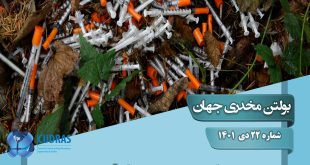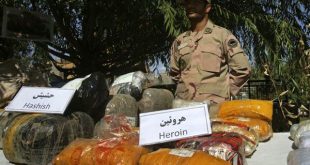
The manual named, “Drugs and Women”, published in 2018, emphasizing the gender differences regarding the drug use, along with the violence against women in this respect, the gender differences amongst men and women are elucidated by the type and pattern of drugs used. Current study focuses on the drug use distinction between men and women, so women’s diverse drug range differs from that of men’s use in the two non-medical groups of tranquilizers and opioids (basic opium).
The prevalence of non-medical use of opioids (sedation) amongst women is comparable to that of men, but not noticeable. On the other hand, men are more likely to use cannabis, cocaine, and opium than women. While female consumers are starting to use drugs more specifically than men. But, increasing their consumption faster than men, the women started to use alcohol, hashish, cocaine and opium derivatives.
Besides, women associate drug use with their emotional partners, in contrast to men. Women who undertook a difficult childhood got adopted to the behaviors in which self-medication, depression, and anxiety among them are far more prevalent than men. Addicted women are more likely to be involved in post-traumatic stress disorder. Due to owning more caring responsibilities, women are more impactful on their families, especially their children.
Studies investigated that drug use is deemed as a social escape, due to their difficult childhood, whereas girls consider it as an internalization of anxiety, depression as well as social isolation, surmised more as self-medication. Besides, gender-based violence amongst addicted women is reported at very high rate in comparison with non-consumer groups. It causes both complicated and various forms of violence such as child abuse, domestic and physical violence, human trafficking especially for women like sexual abuse. They are about two or five times more likely to be abused sexually, so the risk of infectious diseases is higher for them. One-third of total world addicts, also one-fifth of injection drug users are associated with the women in proportion to the vulnerability of infectious diseases, especially HIV and hepatitis C. The pursuit of gender approaches in drug policy is essential regarding prevention, harm reduction, community acceptance.
Women are the main victims of drug addiction and drug trafficking, although less is said about their role in its commerce. According to “women and drugs”, the Office of National Counter Narcotics and Counter Narcotics study the role of women in the supply chain and drug trafficking. Simultaneously, in Latin America and Africa, female drug traffickers are in need of serious attention. The role of women in poppy cultivation in Afghanistan and the planting of Coca in Colombia, and even as “drug mules” are far beyond what we have expected so far. However, not sufficient reliable information is provided by governments in this regards. Although women have a central role in the life of poor families, it is impossible to analyze definitively their status in the drug trafficking chain [planting, harvesting, and distributing].
The total of 98 countries’ reports on drug-related crimes along with the United Nations gender-segregation approach shows 10 percent of all drug-related offenders have been among women. Most of the women’s crimes were involved in the distribution network of drugs and, in most cases, they were forced to commit such crimes. In other studies, the increase in the number of female victims is mainly for the purpose of sexual abuse. The presence of women in the massive chain of drug distribution should be assessed in their vulnerability to repression and coercion, obeying smugglers along with the bad living conditions. Women would take higher risks in comparison to the money they receive. Money is one of the key points to push women to do so.
In Afghanistan, the cultivation and spread of poppy fields are dominant where the culture of gender inequality prevails, thus opium poppy cultivation is prevalent in villages without any education access for the girls. In these areas, poverty as well as abusing female labor force are predominant, consequently they receive food for families in return. In particular, abusing women and children, even without daily payment, remains a major part of the preparation of farms, cultivation, and harvest.
Also, studies show that women are not usually involved in the decision making process of poppy cultivation, in contrast to Latin America where women are playing an undeniable role in the planting process, also decision making process of coca planting, as it is unclear in the largely masculine cocaine labs. Hemp planting for cannabis is also largely associated with women’s labor force in all stages, but the exploitation and distribution. While the laboratories for producing amphetamines show a dominant presence of women as “chefs” and “buyers”.
 Cudras
Cudras






Thank you for your thoughtful article on women’s drug use, also I have read your other articles, found this one really interesting.